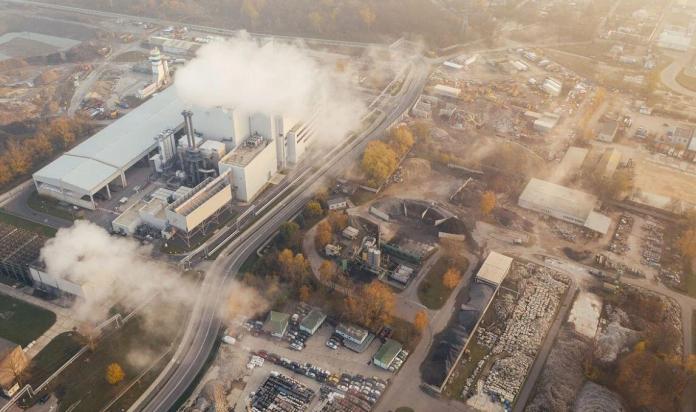In order to prevent global temperatures from exceeding 1.5°C (2.7°F) the pressure is on for businesses to reduce their carbon foot print. Essentially, this means lowering emissions, and the target is a hefty 7.6%. Not an easy task. However, by categorizing emissions using the Scope 1 2 3 system you will be able to measure, and therefore manage, emissions much more easily.
First of all, you need to calculate what your current emissions. Essentially, this is an inventory of your greenhouse gas (GHG) emissions. This will mainly be carbon-dioxide but can be other gases too. What makes this complicated is that you have to consider indirect, not just direct, emissions. The easiest way to calculate your emissions is to use a carbon footprint calculator.
Carbon footprint calculator
It would take far too much time and money to make an exact calculation of GHG emissions from any organization. That’s why the calculation of emissions are just an estimate based on activity data. Activity data will take into account the level of fossil fuels used by a business. The activity data is then multiplied by what’s known as the emission factor.
Many people think about large manufacturers burning fuel, but even small offices have activity data. Think about how much fossil fuel you need to heat the office space. Perhaps you use vehicles to deliver your products. All of these activities produce GHG and will have an impact on your carbon footprint. But how do you know which activities to take into account?
Using Scopes 1 2 3
Breaking down your activity into three separate scopes is the easiest way to calculate your carbon foot print. Scope 1 deals with any direct emissions created by your business operations. So, as mentioned before, this could be heating the office space or running fleet vehicles. These emissions are usually the easiest ones to identify as they are on-site and under your control.
Scope 1 emissions tend to be the ones that a business focuses on. However, they are not actually the ones which will account for the greatest part of your carbon foot print. You may be surprised to hear that it is actually the indirect emissions that account for the majority of your foot print and we will look at those now.
Scope 2 and 3 indirect emissions
Scope 2 deals with the emissions created by your energy provider. You will therefore need to look into how the energy you purchase is produced, as well as the amount of energy you use. Fortunately, the US Environmental Protection Agency has estimated an emission output rate for generated electricity, and this figure can be used to calculate your Scope 2 emissions.
Scope 3 is about the emissions created by your supply chain and often account for the majority of your own footprint. There are many factors to consider when calculating Scope 3 emissions. Whilst a database of these factors does exist, it is not easy to navigate, and most people prefer to engage the help of a carbon foot print calculator for this.
So, other people affect my carbon foot print?
Yes, that’s right. It may feel like double-counting, but the way your suppliers run their businesses has a direct impact on your own carbon foot print. The purpose of this is to make you stop and think about your business decisions at every stage of the process. If you make sustainably responsible choices, then your suppliers will have to follow your lead.
Is it mandatory?
Measuring your carbon footprint is at present only voluntary. However, we all have a combined responsibility to work towards radically reducing our emissions. Calculating your foot print will help you track your progress and ultimately reach that target. Many consumers now also prefer to purchase from organizations that are sustainability conscious and that can demonstrate they care about their foot print.
When do I start?
The United Nations has specified that the reduction in emissions must happen annually between now and 2030. So, the sooner you begin, the better. It will take time to calculate your footprint, but you need to know where you’re starting from before you take any steps to reduce it. Your calculation will be essential to inform any changes you need to make.
The process of calculating your carbon foot print can also make you think about things you hadn’t considered before. For example, you might choose to run a vehicle with low fuel consumption, but have you thought about the lifespan of that car? If it needs replacing sooner than another vehicle it might not be as sustainable a choice as you first thought.
I need help to reduce my carbon foot print
There’s a lot to think about here, but help is available! The most straightforward solution is to purchase software that will automate the whole process for you. One example is the Green Business Bureau carbon foot print calculator software. This includes guidance on building sustainable practices for your business, and will help you lower your emissions and therefore your carbon foot print.
You may also want to read,









Great write-up, I’m normal visitor of one’s website, maintain up the nice operate, and It is going to be a regular visitor for a lengthy time.